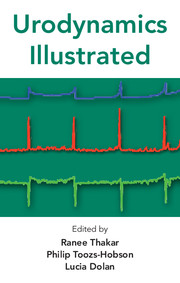
-
Select format
-
- Publisher:
- Cambridge University Press
- Publication date:
- 05 February 2014
- 01 October 2011
- ISBN:
- 9781107784727
- 9781906985110
- Dimensions:
- Weight & Pages:
- Dimensions:
- (216 x 138 mm)
- Weight & Pages:
- 0.24kg, 159 Pages
You may already have access via personal or institutional login
Book description
This book provides a practical guide for anyone performing or training to perform urodynamic studies. Details on how to set up urodynamic equipment and perform individual urodynamic techniques are discussed, ranging from basic tests such as uroflowmetry and subtracted cystometry through to the more complex videocystometry, ambulatory monitoring and urethral function tests. Many of the chapters include case studies to place the investigations within the context of a symptom complex. This book has a place in every urodynamics laboratory as an easy reference guide and is an essential illustrative text for teaching the fundamentals of good urodynamic practice.
Contents
Metrics
Full text views
Full text views help Loading metrics...
Loading metrics...
* Views captured on Cambridge Core between #date#. This data will be updated every 24 hours.
Usage data cannot currently be displayed.
Accessibility standard: Unknown
Why this information is here
This section outlines the accessibility features of this content - including support for screen readers, full keyboard navigation and high-contrast display options. This may not be relevant for you.
Accessibility Information
Accessibility compliance for the PDF of this book is currently unknown and may be updated in the future.


